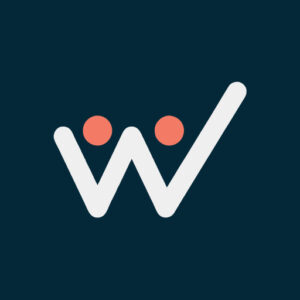The Hidden Cost of Multiple HR Solutions: Simplify Your Startup’s People Operations
Startups are built on momentum—quick decisions, agile pivots, and the drive to move fast. But when it comes to people operations, that momentum can get tangled in complexity. As headcount grows and priorities shift, it’s common for startups to layer on HR tools in response to specific needs: one for recognition, another for engagement surveys, a third for wellness challenges, and maybe a fourth for learning resources.
At first, it seems like a practical way to build a people strategy. But behind the scenes, this patchwork of tools often creates more problems than it solves—especially when it comes to time, cost, and employee experience.
Here’s why relying on multiple HR solutions may be slowing your startup down—and how switching to a unified HR platform can streamline your growth.
The Hidden Costs of Tool Sprawl
1. Financial Waste Adds Up Quickly
SaaS tools come with price tags that don’t always seem significant at first. But those small monthly subscriptions? They multiply. Add in per-user pricing, implementation fees, and hidden costs for integrations or feature upgrades, and suddenly your HR tech stack is bloated—especially for a startup watching every dollar.
Worse, many of these tools overlap in functionality. You may be paying twice for reporting dashboards, engagement tracking, or wellness features just because they’re bundled into different platforms. Over time, this redundancy eats away at your budget.
2. Time Is Money—And You’re Losing Both
Managing multiple HR systems is more than just an administrative burden—it’s a major productivity drain. Your People Ops team spends hours juggling logins, pulling reports, answering employee questions about how to use different tools, and trying to reconcile data across platforms.
When you’re in growth mode, time is your most valuable resource. Spending it on repetitive tasks or chasing down information across different systems is a poor investment—especially when there are more strategic initiatives that need attention.
3. Disconnected Data Limits Insight
Each platform in your tech stack has its own dashboard, reports, and KPIs. But without integration, you’re left guessing about the full picture.
Is engagement improving because of your wellness program—or because your recognition efforts have picked up? Are certain departments struggling because of poor feedback loops, or lack of peer support? You can’t answer these questions without unified data.
Siloed systems mean missed opportunities for early intervention, trend spotting, and strategic decision-making. The result? People strategies that are reactive instead of proactive.
The Employee Experience Suffers, Too
While much of the hidden cost affects your admins, your employees feel the consequences as well. Each platform they’re expected to use comes with a learning curve. Multiple logins, confusing interfaces, inconsistent communication—they all create friction.
In fact, only 20% of employees strongly agree that they feel connected to their organization’s culture, according to Gallup. When engagement tools are scattered and inconsistent, it becomes even harder for employees to feel part of something cohesive and meaningful.
Employees want their tools to be as seamless as the rest of their digital lives. If it’s too hard to find resources, give recognition, join a wellness challenge, or respond to a survey, they’re likely to disengage altogether.
The Case for a Unified HR Platform
Startups don’t have time for complexity. A unified HR platform brings all your people operations—wellness, recognition, surveys, goals, resources, rewards—into one place. And the benefits go far beyond simplicity.
1. One System = Less Admin Overhead
Instead of logging into five platforms and answering five sets of employee questions, admins manage everything from one dashboard. Onboarding, engagement tracking, reporting—it’s all centralized, saving hours every week.
2. Smarter Data for Smarter Decisions
When your tools speak the same language, you gain a holistic view of your workforce. A unified system connects the dots between feedback, recognition, activity, and engagement—giving you actionable insights to guide your people strategy.
3. A Better Employee Experience
One login. One interface. One consistent experience. When employees can access everything they need in one place, they’re more likely to engage with it. That ease of use increases participation in wellness challenges, peer recognition, and surveys—leading to better outcomes and stronger culture.
Why Startups Should Streamline Early with a Unified HR Platform
Startups often wait too long to unify their HR systems, believing that complexity is just part of scaling. But the earlier you simplify, the easier it is to stay agile.
Here’s why early-stage companies benefit the most from a unified platform:
- Faster onboarding: New hires can get up to speed quickly when everything is in one place.
- Stronger culture from the start: A single hub for engagement helps you build and reinforce the core values you want to scale.
- Fewer growing pains: Instead of layering on tools and processes reactively, you create a foundation that can grow with you.
Waiting until you’re “big enough” often means untangling a web of contracts, data, and habits. That’s time and energy you could have spent building something better from the beginning.
How Woliba Makes People Operations Effortless with a Unified HR Platform
At Woliba, we’ve built our platform to solve exactly this problem. We know startups need simplicity, speed, and flexibility—not a mountain of tools that require constant maintenance.
With Woliba, you get one platform that supports:
- Employee Wellness: Access to challenges, fitness videos, recipes, and resources.
- Recognition & Rewards: Peer-to-peer recognition, spotlight awards, and core values-based shoutouts.
- Engagement Surveys: Real-time insights into team sentiment and performance.
- Coaching & Development: AI-driven data to personalize leadership coaching and growth strategies.
- Resource Libraries: Curated content to support mental health, nutrition, financial wellbeing, and more.
- Admin Efficiency: One dashboard to manage it all—custom branding, reporting, user management, and data insights.
Whether you’re a 20-person team or scaling past 200, Woliba grows with you—no need to bolt on another tool every time a new need arises.
Closing Thought: Why a Unified HR Platform is Superior
Growth is exciting. But if your internal systems don’t scale with you, that growth becomes harder to manage. A disjointed approach to HR doesn’t just waste money—it chips away at engagement, culture, and clarity.
Startups need to move fast, stay agile, and keep people at the center of everything. A unified HR platform like Woliba helps you do just that—by consolidating tools, streamlining processes, and giving your team one place to connect, thrive, and grow.
Let go of the patchwork. It’s time to simplify your people operations—and set your startup up for long-term success.








